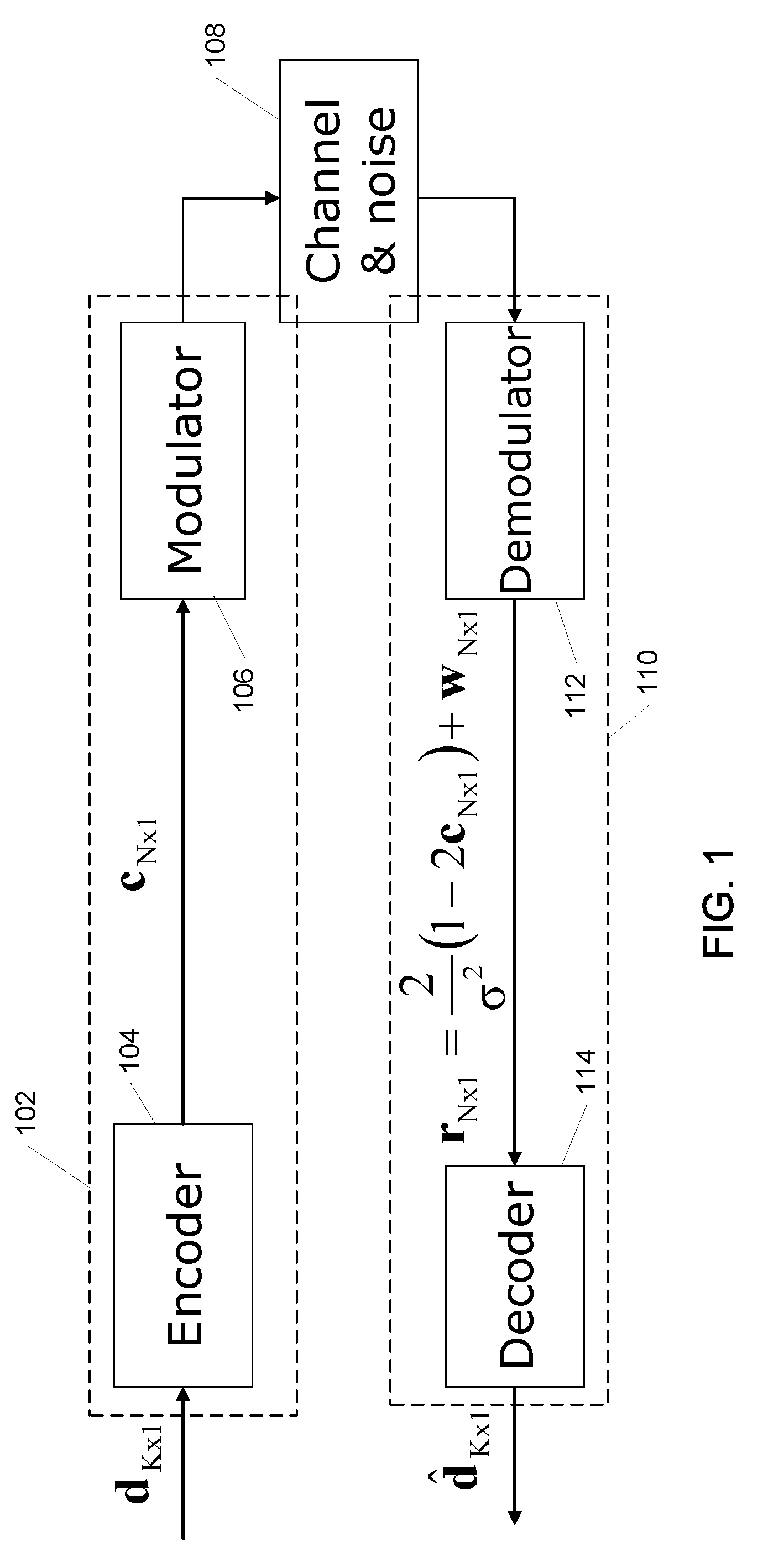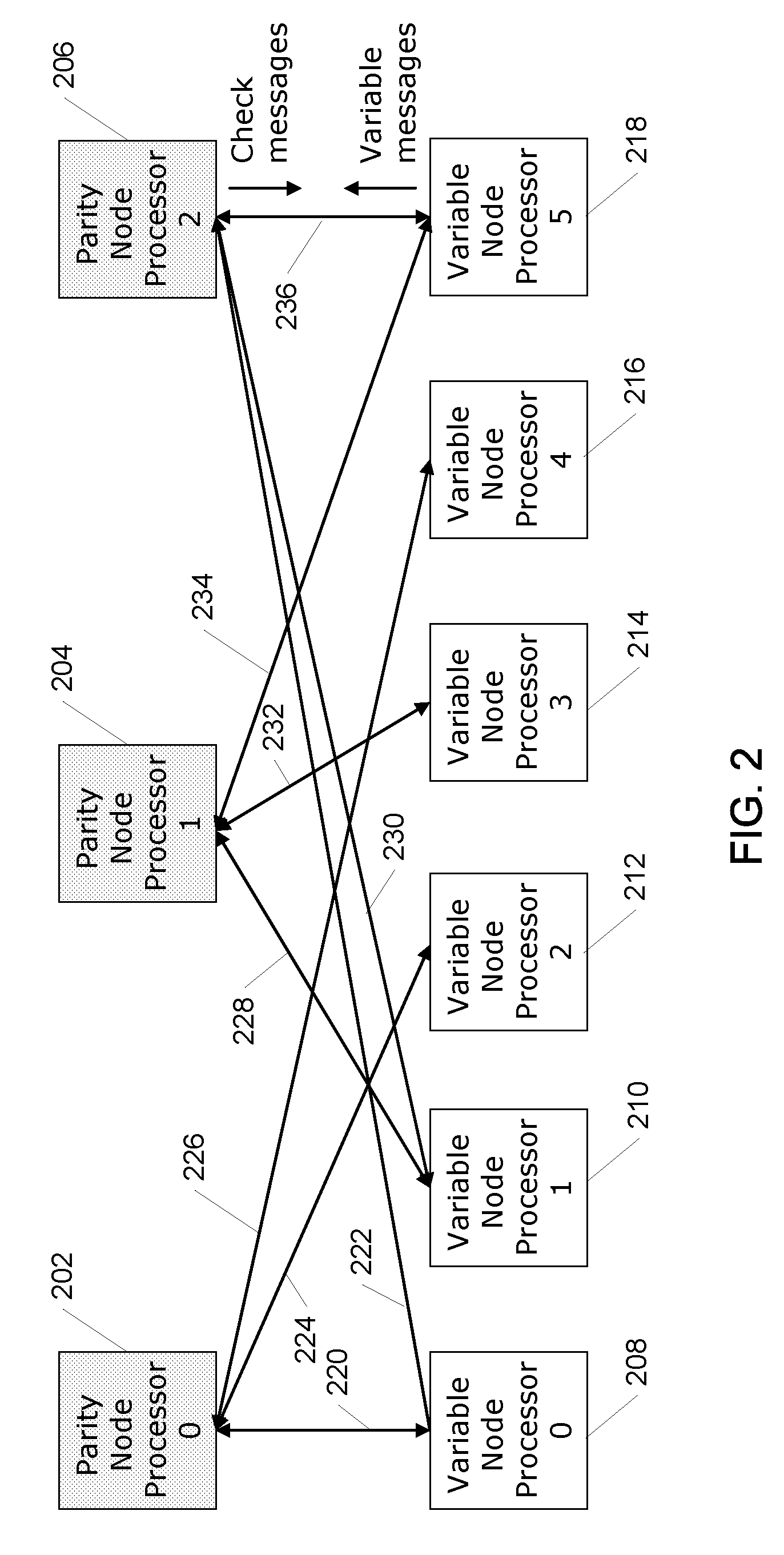Systems and methods for reduced complexity LDPC decoding
a low-density parity and decoding technology, applied in the field of low-density parity decoding, can solve the problems of requiring more resources, reducing the probability of information loss, and reducing the approximation error of min-sum algorithm (msa), so as to reduce the complexity of implementing a ldpc decoding and maintain accuracy. , the effect of reducing the approximation error of the min-sum algorithm
- Summary
- Abstract
- Description
- Claims
- Application Information
AI Technical Summary
Benefits of technology
Problems solved by technology
Method used
Image
Examples
Embodiment Construction
.”
BRIEF DESCRIPTION OF THE DRAWINGS
[0033]Features, aspects, and embodiments of the inventions are described in conjunction with the attached drawings, in which:
[0034]FIG. 1 is a diagram illustrating an example communication system that uses LDPC codes;
[0035]FIG. 2 is a diagram illustrating the operation of an exemplary parity check matrix;
[0036]FIG. 3 is a diagram illustrating an exemplary parity node processor;
[0037]FIG. 4 is a diagram illustrating the operation of an exemplary parity node processor;
[0038]FIG. 5 is a diagram illustrating the operation of an exemplary variable node processor;
[0039]FIG. 6 is a diagram illustrating an example parity node processor configured in accordance with one embodiment;
[0040]FIG. 7 is a diagram illustrating an example parity node processor configured in accordance with another embodiment;
[0041]FIGS. 8 and 9 are graphs showing respectively the simulated frame error rate (FER) and bit error rate (BER) performance for the irregular, ½-rate LDPC cod...
PUM
 Login to View More
Login to View More Abstract
Description
Claims
Application Information
 Login to View More
Login to View More - R&D
- Intellectual Property
- Life Sciences
- Materials
- Tech Scout
- Unparalleled Data Quality
- Higher Quality Content
- 60% Fewer Hallucinations
Browse by: Latest US Patents, China's latest patents, Technical Efficacy Thesaurus, Application Domain, Technology Topic, Popular Technical Reports.
© 2025 PatSnap. All rights reserved.Legal|Privacy policy|Modern Slavery Act Transparency Statement|Sitemap|About US| Contact US: help@patsnap.com



